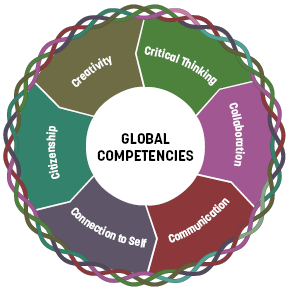Arts education in Manitoba includes the disciplines of drama, visual arts, music, and dance. These disciplines represent expressive art forms and unique literacies that have the power to communicate and embody ideas and feelings by mobilizing the body, senses, mind, intellect, emotions, imagination, and intuition.
Arts education provides learners with the opportunity to get to know themselves better, to express themselves in a variety of ways, and to develop their perception, interpretation, and understanding of the world around them. It illuminates, deepens, and broadens the human experience. Drama, visual arts, music, and dance foster the development of global competencies and sustainable learning, diversify literacy choices, and contribute to learners’ growth, well-being, and sense of identity.
Each of the arts education disciplines gathers four recursive learning areas highlighting important practices, skills, and abilities. These areas are Making, Creating, Connecting, and Responding. Arts language and practices (Making) are connected to how they may be used to create (Creating), to what understandings and significance the language and practices can communicate through diverse contexts (Connecting), and to how critical reflection about dance transforms learning and develops identity and agency (Responding). Learning in these areas is not designed to be taught in isolation, but interdependently so that the learner can engage and mobilize these learning areas to stimulate and support artistic development. The butterfly images in drama, visual arts, music, and dance illustrate recursive learnings in arts education.
